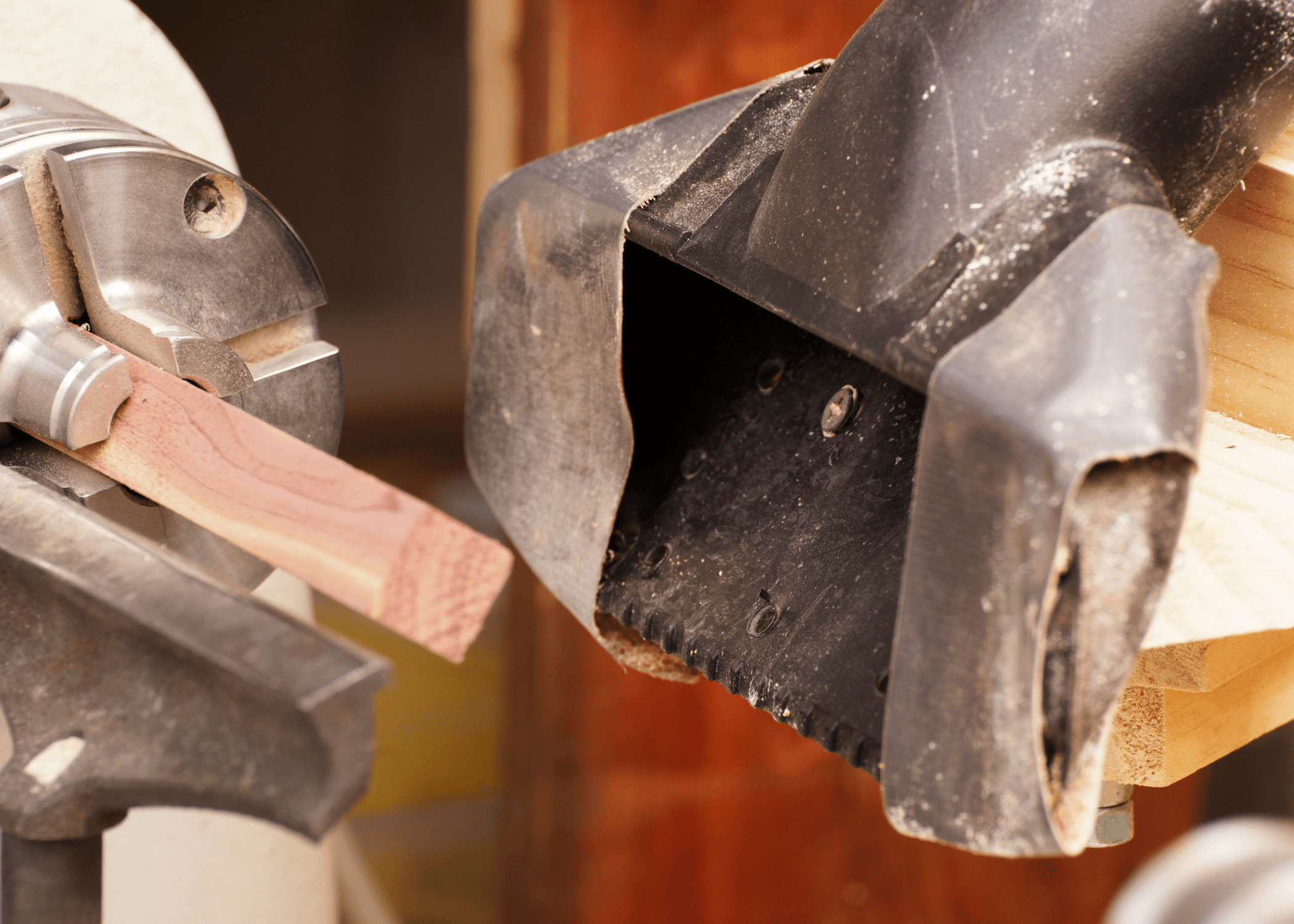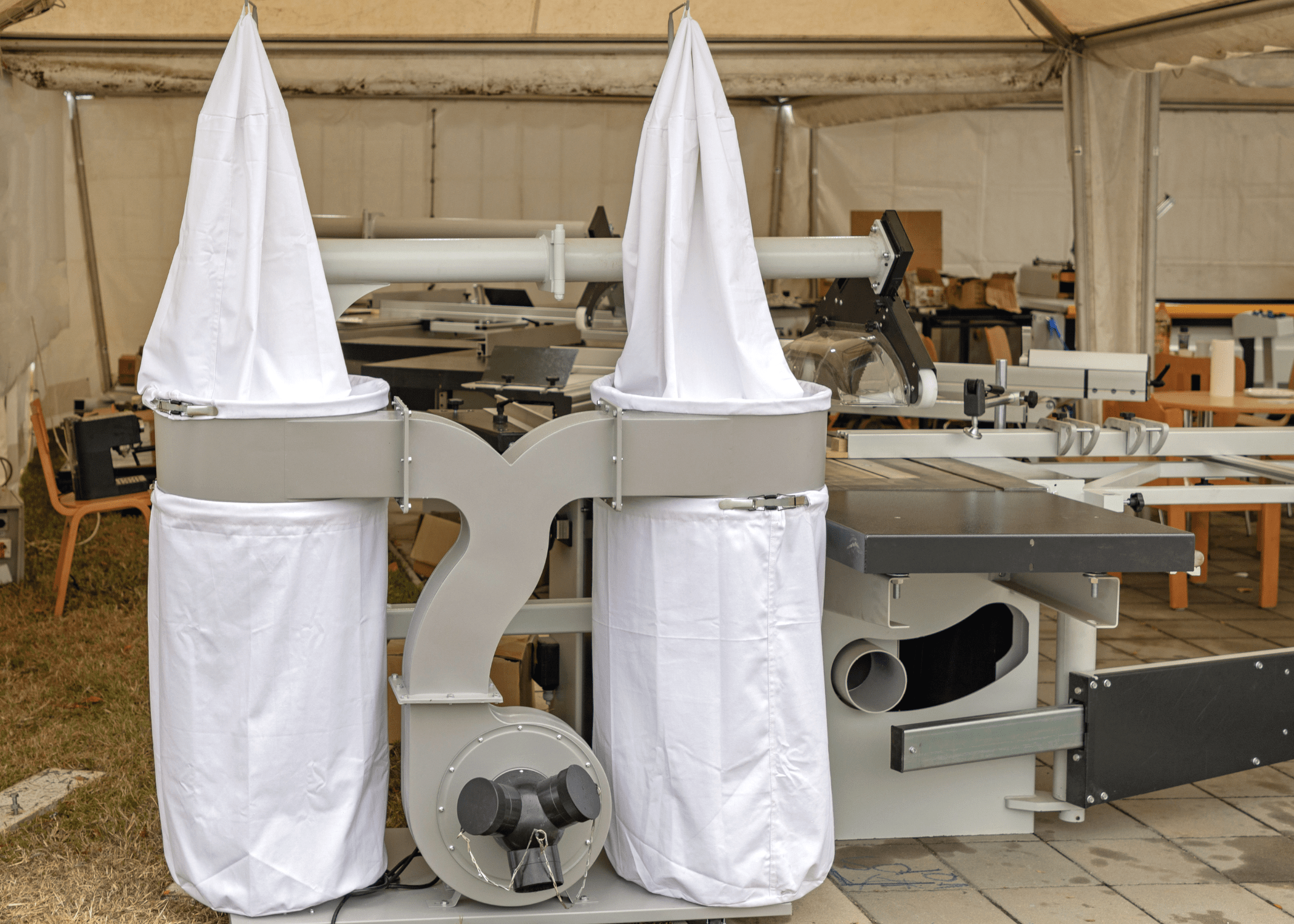Everything to Know About Setting Up a Dust Collection System for a Small Shop
When setting up a workshop, especially for woodworking, one crucial component that should never go unnoticed is having an efficient dust collection system that’s ideal for a small shop. This system isn’t just about keeping the area tidy; it’s about ensuring the health and safety of everyone who steps into the shop.
Fine particles from materials like wood, metal, and plastic can pose serious health risks when inhaled, which is why investing in a dust collection system is essential.
Importance of Dust Management in a Small Woodworking Shop
Managing dust in a small woodworking shop is not only essential for maintaining a clean and efficient workspace but also crucial for the health and safety of everyone in the shop. Wood dust can be a serious hazard if not properly controlled, potentially leading to respiratory issues and other health problems over time.

Integrating a dust collection system for small shop environments can significantly mitigate these risks by capturing dust at its source before it has a chance to circulate. This proactive measure ensures that the air remains clean, reducing the potential for health problems and making the shop a safer place to work.
Also, a clean shop is a more productive one. Excessive dust can damage both equipment and finished products, affecting the overall quality of the work produced. A dust collection system helps maintain the precision of cutting tools by preventing the buildup of dust particles that can interfere with mechanical parts.
This not only extends the life of your equipment but also enhances the quality of your craftsmanship. By investing in an effective dust collection system for a small shop, you can achieve a higher level of efficiency and product quality, making the workspace both safer and more enjoyable.
Key Components of an Effective Dust Collection System
When setting up a dust collection system for a small shop, it’s essential to understand the key components that will ensure its effectiveness. The heart of the system is the dust collector itself, which uses a motor and fan to suck in and filter dust particles from the air.
The design and size of the collector should be matched to the volume of air and type of particles produced in your shop. Equally important is the filter; a high-quality filter traps fine particles that can be harmful to health and ensures that only clean air is expelled back into the workshop.

Another crucial component is the ductwork, which transports dusty air from various machines to the dust collector. Ensuring that this is properly designed and installed will maximize efficiency and airflow.
The use of smooth, straight ducting with minimal bends will help to maintain strong airflow and prevent clogs. Additionally, it’s wise to equip your system with a dust separator or cyclone. This device helps by pre-filtering larger particles before they reach the main filter, thus extending its life and improving the overall performance of your dust collection system.

Choosing the Right Dust Collector for Your Small Shop
First, you will want to consider both the size of the space and the type of work being conducted. A smaller, more compact unit might suffice for a workspace where only light amounts of dust are generated, such as in electronics repair or small-scale woodworking.
However, opting for a system with a higher cubic feet per minute (CFM) rating would be beneficial for activities that produce a significant amount of sawdust or particulate matter, like heavy woodworking or metalworking. This ensures that the dust collection system can handle the volume of air and debris produced without overwhelming the workspace or the system’s filters.

Assess the versatility and adaptability of the system. Some units come with customizable features like variable speed controls or reversible airflow, which can be incredibly advantageous in a dynamic small shop setting.
These features allow you to tailor the system’s operation based on the specific task at hand, enhancing efficiency and ensuring a cleaner working environment. Investing in a dust collection system that not only fits the physical dimensions of your shop but also complements the nature of your work will result in a safer and more productive workspace.
Installation Tips for Maximizing Efficiency
It’s crucial to consider the placement of both the collector itself and the tools it will serve. Ideally, the dust collector should be positioned in a central location to minimize the length of the duct runs.
This setup not only improves the efficiency of the system by reducing the potential for clogs but also enhances suction performance. Keeping the pathways as straight as possible further ensures optimal airflow, aiding in the effective removal of dust particles from the air.

Another important tip is to ensure that all connections in the ductwork are sealed tightly. Leaks in the duct system can significantly diminish the system’s effectiveness, leading to dust build-up in the shop.
Using high-quality, durable duct tape or a sealant designed for HVAC systems can help secure these connections and prevent air from escaping. Regular maintenance checks are also essential to keep the system running smoothly and efficiently, ensuring that the workspace remains clean and breathable, which is vital for the health and safety of everyone in the shop.
Maintenance Practices to Keep Your System Running Smoothly
Regular maintenance is crucial to ensure efficiency and longevity. One key practice is to routinely check and clean the filters. Over time, these filters can become clogged with debris, significantly reducing the system’s ability to clear dust from the air.
Typically, it’s recommended to inspect filters after every major project or, at a minimum, once a month. Another important aspect is monitoring the dust bags. These should be emptied regularly to prevent overfilling, which can cause the system to clog or even fail.

It’s wise to keep an eye on the hoses and connections within your system. Make sure there are no leaks or blockages that could impair functionality. Small shop owners should also listen for any unusual noises coming from the dust collector—this could be a sign of an internal problem that needs immediate attention.
Regularly wiping down the external surfaces will prevent dust from building up, which can eventually seep back into the air if not managed. By adhering to these simple maintenance steps, your dust collection system should continue to serve as a vital asset in maintaining a clean and safe workshop environment.
Related Articles
- ManMade Recommended: This is, Hands Down, the Best Dust Mask for Woodworking
- Mastering the Art of Miter Cuts on a Miter Saw
- How to Cut Hardie Board – Tips and Techniques
Frequently Asked Questions (FAQs)
What is a dust collection system, and why do I need one in my small shop?
A dust collection system is designed to capture, convey, and collect dust from your working environment. In a small shop, it’s essential for maintaining air quality, reducing fire hazards associated with combustible dust, and protecting your respiratory health. It essentially vacuums dust and debris from the air and tools, keeping your workspace cleaner and safer.
Can I use a shop vac as a dust collection system?
While a shop vac can be used for small-scale dust collection and cleanup, it’s not a substitute for a dedicated dust collection system. Shop vacs are designed for low-volume, high-pressure suction, making them ideal for cleaning up dust and debris. However, for continuous dust collection from power tools, a dedicated dust collection system with a larger capacity and more powerful suction is recommended.
How do I choose the right size dust collector for my small shop?
The size of the dust collector you need depends on the size of your shop and the number of tools you need to connect. A good rule of thumb for choosing the right dust collector size is to calculate the static pressure (sp) of your ductwork and the necessary airflow (cfm) to clear dust from your tools and match these values on the dust collector’s fan curve.
Is it necessary to have a dust collector for every machine in my shop?
Not necessarily. Many small shops use a central dust collection system that can be connected to multiple machines via a network of ducts. This is more space and cost-efficient than having a separate dust collector for each machine. However, for machines that produce a lot of dust or require specific filtration, a dedicated dust collector might be necessary.
What’s the difference between a single-stage and a two-stage dust collector?
A single-stage dust collector pulls all the dust and debris directly into the filter, while a two-stage dust collector separates larger particles into a drum or bin before the air goes through the filter. Two-stage collectors are generally more efficient, as they prevent large particles from clogging the filter, thereby maintaining suction performance and prolonging filter life.
How often should I clean or replace the filters in my dust collection system?
This depends on how frequently the system is used and the type of material being collected. Check the manufacturer’s recommendations for your specific system. As a general guideline, inspect filters regularly for signs of wear or clogging and clean or replace them as needed to ensure optimal performance and air quality.
Can I vent my dust collector outdoors to save on filtration costs?
Venting outdoors can be an option to save on filtration costs and maintain indoor air quality; however, it’s important to check local codes and regulations first. Some areas have restrictions on venting dust outdoors due to environmental control issues. Additionally, consider the loss of conditioned air (heated or cooled) from your shop, which could increase your energy costs.
Ready to start your next project? Join our DIY community to receive tool tips, how-to guides, and exclusive creative insights. Subscribe to the ManMadeDIY newsletter now! Click here to unlock a world of hands-on inspiration.









